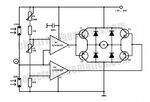kbtan
Member level 2

Excuse me, can any one help me with my project. I am going to build a solar tracker but i found out that the LDR of my circuit always have not equal resistance during night causing the motor run non stop at night. I try buy 4 to 5 set of LDR but all the resistance not equal. I am using the comparator to control the solar tracker.






